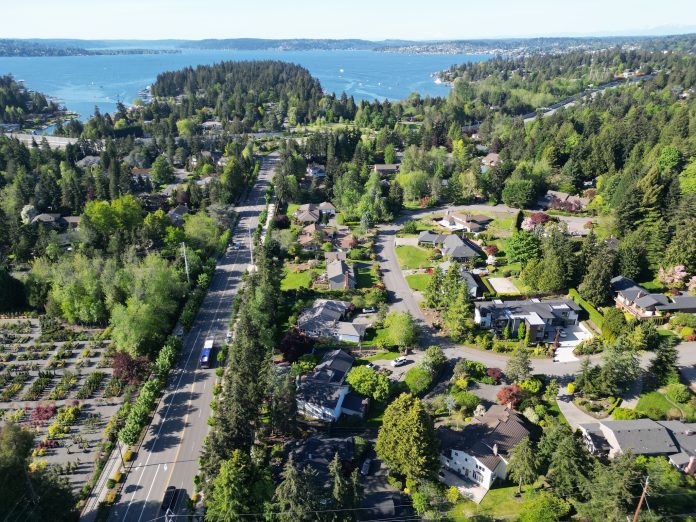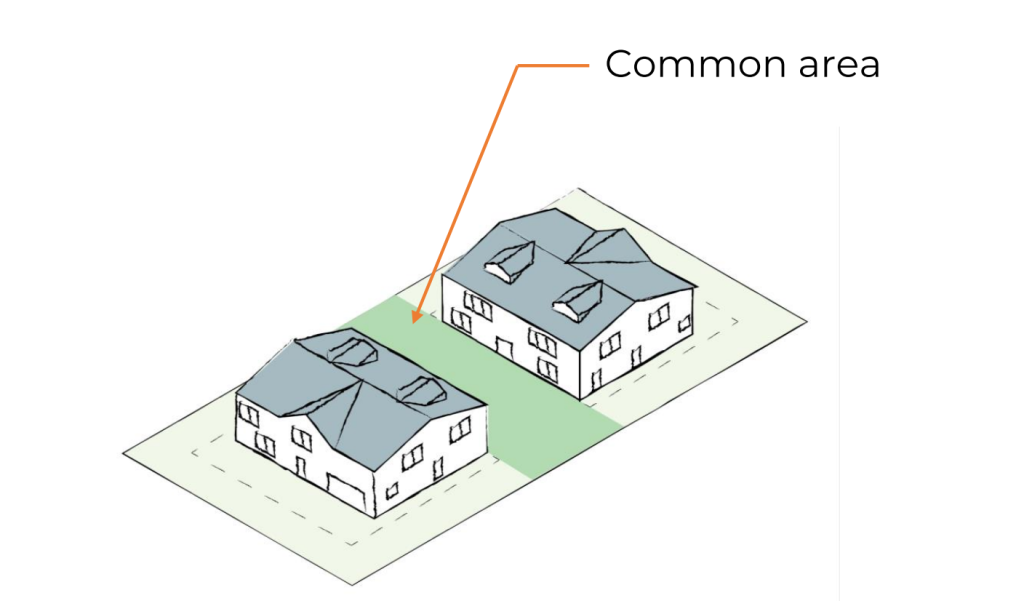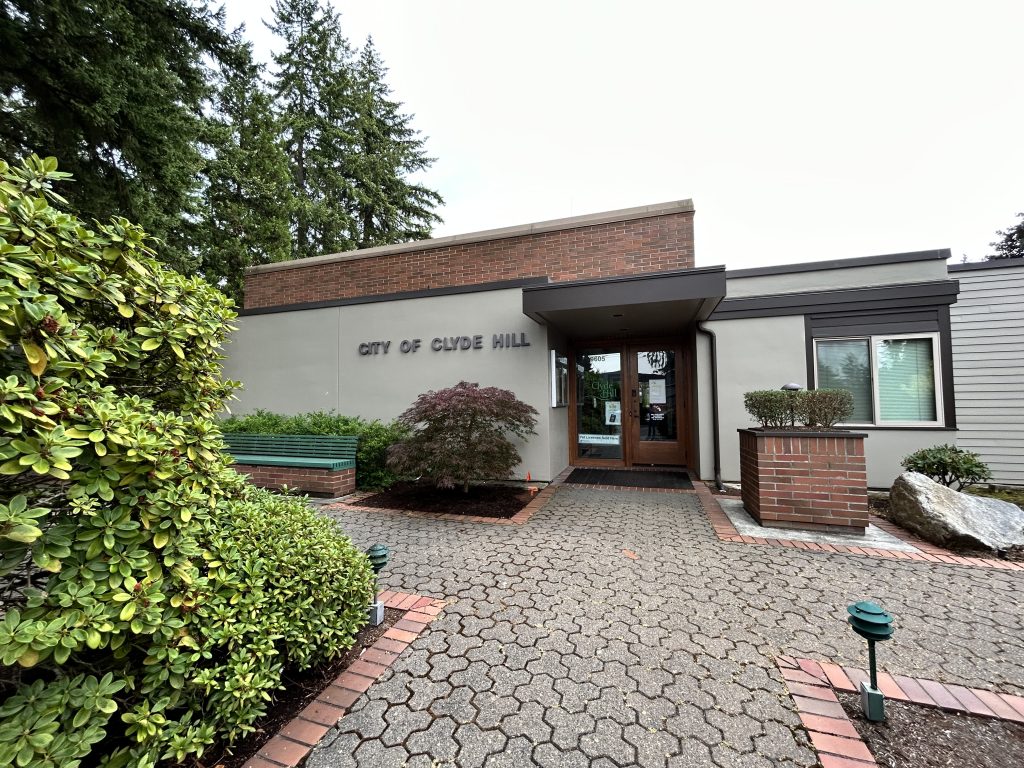
Across Puget Sound, housing affordability is often described as an emergency, as the rate of homelessness continues to climb and the housing shortage continues to intensify. But last week in Clyde Hill, the 3,000-resident enclave tucked in between Bellevue and Medina, the emergency was very different: policymakers worried too much housing is on deck and some potential new homes that could be too large.
By a 4-0 vote, the Clyde Hill City Council adopted an interim zoning control that immediately adjusted the city’s definition of “cottage housing,” adding a 1,500-square-foot size limit that hadn’t previously existed.
The new restrictions come less than six months after initial zoning code adjustments in Clyde Hill to comply with House Bill 1110, Washington’s 2023 middle housing law, which requires cities of Clyde Hill’s size to allow at least two housing units on all residential lots. Long dominated by restrictive single family zoning, Clyde Hill’s average home value is more than $4 million.
A size limit on new cottage homes isn’t a unique move, with caps in place in nearby Kirkland and Medina, but the new restrictions make Clyde Hill’s middle housing code one of the most stringent in the state. Cottage housing is the only type of middle housing allowed in Clyde Hill, with duplexes, stacked flats, and courtyard apartments excluded from the city’s land use code in contradiction of state guidance when it comes to implementing HB 1110.

According to Clyde Hill officials, the “emergency” that prompted the city’s action was the receipt of a permit application to take advantage of the middle housing code. Despite the fact that building a very large single-family home is legal in Clyde Hill — as long as a builder complies with stringent height limits, lot coverage requirements, setback requirements on all sides, and minimum lot-size requirements — the permit to build two cottage homes was seen as taking advantage of a loophole.
“It has come to the city’s attention that some developers may seek building permit applications to construct two ‘cottage’ housing units, each potentially consisting of approximately 5000 square feet gross floor area, on one single-family lot,” the emergency ordinance stated. “Immense homes at this scale do not meet the intent of cottage housing and frustrate, rather than serve, the legislature’s intent to increase affordable community-oriented housing stock.”
Clyde Hill has not imposed size limits on ‘oneplex’ single family homes, in the same name of bringing down housing costs. In fact, mansions exceeding 5,000 square feet will continue to possible on many large lots. However, if the same lot was built as two cottage homes, builders would see allowed housing space cut in half, even as it’s split between two households. Plus, cottage housing would see greater open space requirements. With Clyde Hill’s sky-high costs for land, the restrictive cottage housing policies could end up killing the feasibility of such projects and steering builders back toward mansion construction.
At Monday’s meeting, the fact that no size cap on cottage housing had initially been put in place was described as a “near miss” by one councilmember.
“State law defines what a cottage is in a variety of ways, and the intent was where there used to be one house, there might be two cottage housing,” Clyde Hill Mayor Pro Tem Dean Hachamovitch said. “The definitions of cottage housing leave open to interpretation lots of aspects of what is cottage houses compared to a full-blown single family dwelling. Other municipalities took the opportunity when permitting cottage housing to put more structure into it, to talk about footprint, square footage, etc. The city of Clyde Hill did not, for a variety of reasons.”
The ordinance’s emergency status allows the change to take effect before any permits vest, blocking cottage homes larger than 1,500 square feet. It stays in effect for six months, with a public hearing only required after the fact.
“The City Council finds that an exemption under [State Environmental Policy Act] SEPA for this action is necessary to prevent an imminent threat to public health and safety through construction of overly large cottage housing. SEPA review, if necessary, of any proposed permanent regulations will be conducted as required by law,” the ordinance notes.
While nothing in state law explicitly prohibits a size cap on cottage homes, that doesn’t fully clear the city when it comes to the question of whether such a cap is allowed. HB 1110 prohibits cities from requiring “any standards for middle housing that are more restrictive than those required for detached single-family residences” through development regulations, of which a size cap would likely qualify. Another state law requires cites to document the “barriers such as development regulations” that are standing in the way of addressing housing affordability.
In an email update sent to Clyde Hill residents after the emergency ordinance was approved, Hachamovitch and fellow Councilmember Steve Sinwell reiterated that the update was intended to align with the state legislature’s “intent” when passing the middle housing law.
“After the code update in June 2025, some residents expressed concern about the lack of a specific size limit on cottage homes in Clyde Hill, noting that State lawmakers and housing lobbyists intended the middle housing mandate to increase the availability of affordable housing,” the email stated. “In response to these concerns, the City Council enacted an interim zoning control ordinance that now defines the size of cottage homes in Clyde Hill.”

But a comment made later in Monday’s meeting, by Mark Kroese, the chair of Clyde Hill’s planning commission, undermined that rationale –admittedly hard to accept given Clyde Hill’s high-end housing market — that the change was driven by an intent to focus on housing affordability.
“One of the things that strikes me about the cottage home discussion is that the impetus for the discussion was an early warning system called applying for a permit, right? So it’s like, hey, somebody applied to put two 5,000-foot homes on this lot. Whoa, is that the character of our neighborhood? Fast forward: we have the discussion,” Kroese said.
Washington cities with over 25,000 residents were required to implement specific provisions under HB 1110 dealing with affordable housing, allowing property owners to unlock the potential for four units where only two are allowed if those extra units are set aside as subsidized. While Clyde Hill wasn’t included in this mandate, there was nothing preventing the city from adopting a provision like it, but they did not.
Clyde Hill is already under scrutiny for alleged non-compliance with state housing law, after an appeal was filed earlier this year against the city’s new long term growth plan — adopted in February — by the land use advocacy nonprofit Futurewise. That appeal asserts that the Clyde Hill’s planning falls short when it comes to another new law, HB 1220, which requires cities to plan for future housing needs across all income groups, and document programs and actions needed to achieve housing affordability. And it comes on the heels of a successful appeal by Futurewise against the City of Mercer Island on similar grounds, one that is currently being challenged in King County Superior Court.
That appeal, which could go to a hearing as soon as next spring unless a settlement between Futurewise and the City of Clyde Hill is reached, doesn’t appear to be chastening Clyde Hill officials away from ramping up restrictions on builders, as the new emergency restrictions clearly highlight.
Ryan Packer has been writing for The Urbanist since 2015, and currently reports full-time as Contributing Editor. Their beats are transportation, land use, public space, traffic safety, and obscure community meetings. Packer has also reported for other regional outlets including BikePortland, Seattle Met, and PubliCola. They live in the Capitol Hill neighborhood of Seattle.



